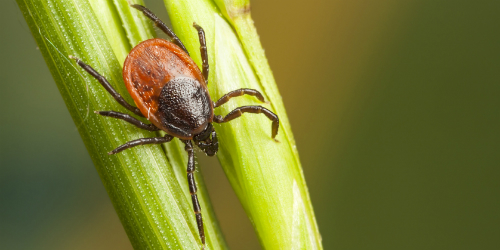- About Us
- Report an Incident
- Safety Management
-
- Aerosol Transmissible Disease
- Bloodborne Pathogens
- Asbestos Program
- Confined Spaces
- Construction Safety
- Control of Hazardous Energy
- County Safety Management Program
- Ergonomics Program
- Fall Protection
- Fleet Safety
- Hazard Communication Program
- Hearing Conservation
- Heat Illness Prevention
- Injury & Illness Prevention Program
- Lead Monitoring Program
- Personal Protective Equipment
- Respirator Protection Program
- Vector Borne Illness
- Forms
- Staff Assignments
- Website Accessibility Assistance
- Back to Monitoring & Testing
Tick Screening

Ticks are parasitic insects that attach and burrow into the skin of animals, including humans. They are commonly found in wooded vegetation with high grass and leaves. Occasionally, they will come into gardens and yards if there are places for them to hide. They feed on blood, and as they feed, they prevent the blood from clotting by excreting an anticoagulant. They remain attached until their bodies become engorged as but may be difficult to detect until that point. The best method of prevention is to avoid them. If going into their habitat is unavoidable, the use of pesticides and repellents is advisable. Humans and domestic animals should be thoroughly checked for ticks and any found must be removed and properly disposed of.
Ticks carry a number of diseases that can be infectious to humans. The most commonly known is Lyme disease and is the most widespread. Other diseases carried by ticks can be regional such as the Rocky Mountain spotted fever.
OSHAIIPP and Medical Services and First Aid regulations would apply to protect employees in the event of exposures to ticks or other animals. Organizations with employees at risk of occupational exposure to disease-carrying animals should develop programs that specifically address the hazard.
To get more information on the applicability of this program for a specific County operation please contact the corresponding departmental Safety Coordinator.
For further information on specific regulatory guidelines please refer to the link(s) below.
Ticks (CDC)
Ticks (Medline Plus)
Ticks (EPA)
Ticks (OSHA e-Tool)
Injury and Illness Prevention Program
Medical Services and First Aid (Cal-OSHA)
Potential for Occupational Exposure to Lyme Disease (OSHA Information Bulletin)
Lyme Disease Facts (OSHA)